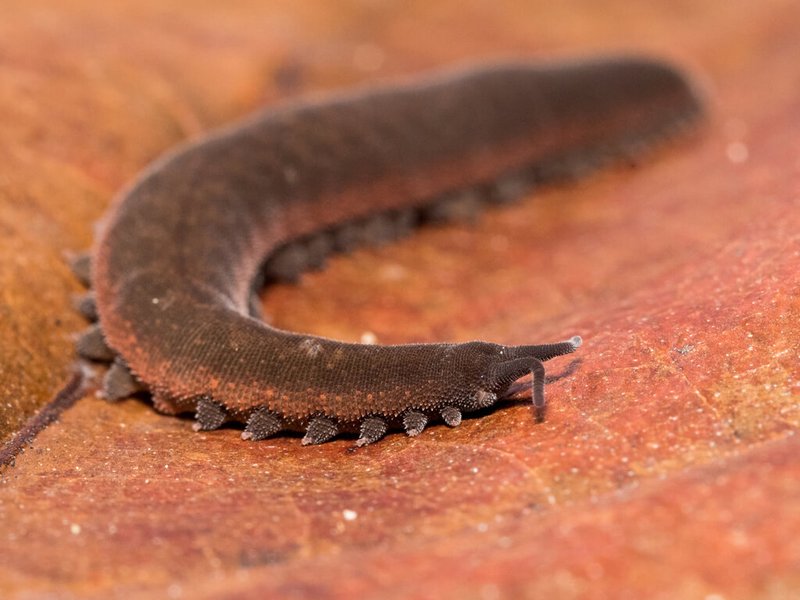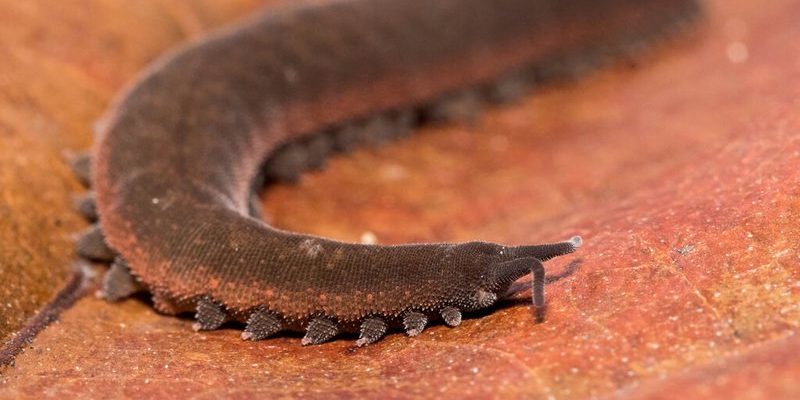
Imagine a pair of velvet worms, twining together like strands of yarn, demonstrating a bond that surpasses mere survival. This article dives into the behavioral studies surrounding velvet worm pair bonding, exploring how these creatures pair up, what their relationship looks like, and why it even matters. So grab a cup of coffee, and let’s unravel this fascinating world together.
What Are Velvet Worms?
First things first—let’s get to know these intriguing little guys. Velvet worms are not actually worms. They belong to an ancient group of animals that share characteristics with both insects and annelids. With their soft, velvety skin and segmented bodies, they look like something straight out of a sci-fi movie.
These creatures are typically found in warm, humid environments, like the forests of South America, Australia, and even some parts of Africa. They have a unique way of moving, using a combination of their many legs and a kind of slithering motion. What truly stands out is their hunting strategy: they shoot a sticky mucus at their prey to trap them. Not your average dinner date, right?
Understanding velvet worms’ biology gives us insight into their behavior, especially when it comes to forming pair bonds.
The Science Behind Pair Bonding
So, what exactly is pair bonding? In essence, it’s a strong social bond between two individuals, often seen in many species, including humans. Pair bonding can come in handy for reproductive success and ensures that both partners work together to raise offspring.
In the case of velvet worms, studies have shown that they exhibit behaviors similar to those seen in more traditionally studied animals, like birds and mammals. For example, they often engage in elaborate courtship displays, which can include body posturing and synchronized movements. This dance isn’t just for show; it’s a crucial first step in establishing a strong connection.
Here’s the thing—while many animals bond for survival, velvet worms may have a unique reason to stick together: they produce fewer offspring compared to other species. This makes their bonding even more critical, as ensuring survival and protection of the young becomes paramount.
How Do Velvet Worms Form Bonds?
You might be wondering how exactly these quirky critters manage to find their partners. Velvet worms participate in what scientists call “promiscuous mating,” meaning they don’t stick to one partner for life. Instead, they may engage with multiple partners throughout their lives.
The courtship process is quite fascinating. Male velvet worms will often engage in a ritualistic display, which may include pheromone secretion to attract females. Once a female shows interest, they may start to twine together, much like a dance. This intimate interaction helps create a connection and allows for the transfer of sperm, ensuring the continuation of their species.
Interestingly, this bonding behavior is not just a one-off event. After mating, they may remain together for a while, displaying affection through gentle touches or movements. It’s a clear indication that even in the animal kingdom, relationships can be more than just a quick fling.
The Role of Environment in Bonding
Just like us, the environment plays a huge role in the relationships of velvet worms. They thrive in damp, humid conditions, which are crucial for their survival and overall health. When their environment is disrupted, it can impact their ability to form bonds.
For instance, if the humidity levels drop, it can lead to stress, making it challenging for these worms to interact effectively. This situation can lead to decreased reproductive success, as their bonding rituals might be interrupted. A stable environment is key for maintaining the delicate balance of their relationships.
Additionally, the habitat can affect the availability of resources like food and shelter, which are essential for raising their young. A safe and resource-rich environment allows for stronger pair bonding, contributing to the survival of the next generation.
Why Pair Bonding Matters
Pair bonding in velvet worms isn’t just cute or interesting; it serves practical functions that are crucial for their survival. First, it can increase individual fitness—the likelihood of surviving and reproducing. By forming bonds, they can help protect their young and ensure successful mating.
Moreover, studying velvet worm pair bonding can give us fascinating insights into the evolution of social behavior across species. If these ancient creatures exhibit such complex interactions, it challenges our understanding of how sociality has developed in the animal kingdom.
Ultimately, the study of pair bonding in velvet worms can also shed light on how environmental changes impact behavior, opening doors to research on how living creatures adapt to changing climates and ecosystems.
In diving into the world of velvet worm pair bonding, we’ve discovered that love and partnership can be found in the most unexpected places. These unusual creatures remind us of the complexity of relationships in nature, showcasing behaviors that are both intriguing and important for survival.
Whether you’re fascinated by their courtship rituals or the role of their environment in shaping their bonds, there’s much to learn from these ancient beings. As we continue to explore the depths of animal behavior, let’s take a cue from the velvet worm: strong connections, whether in love or friendship, can have a significant impact on our lives and the world around us.

